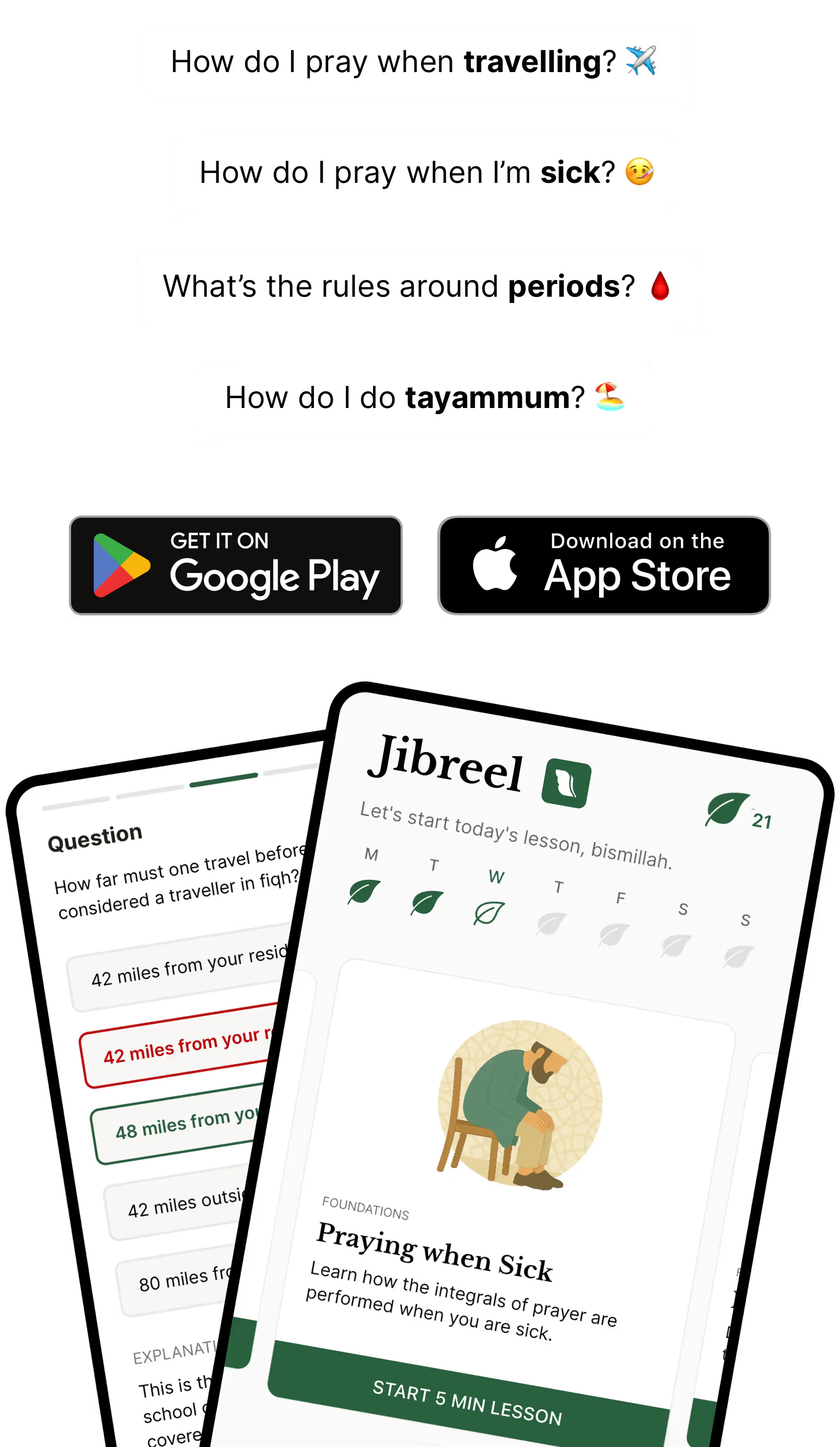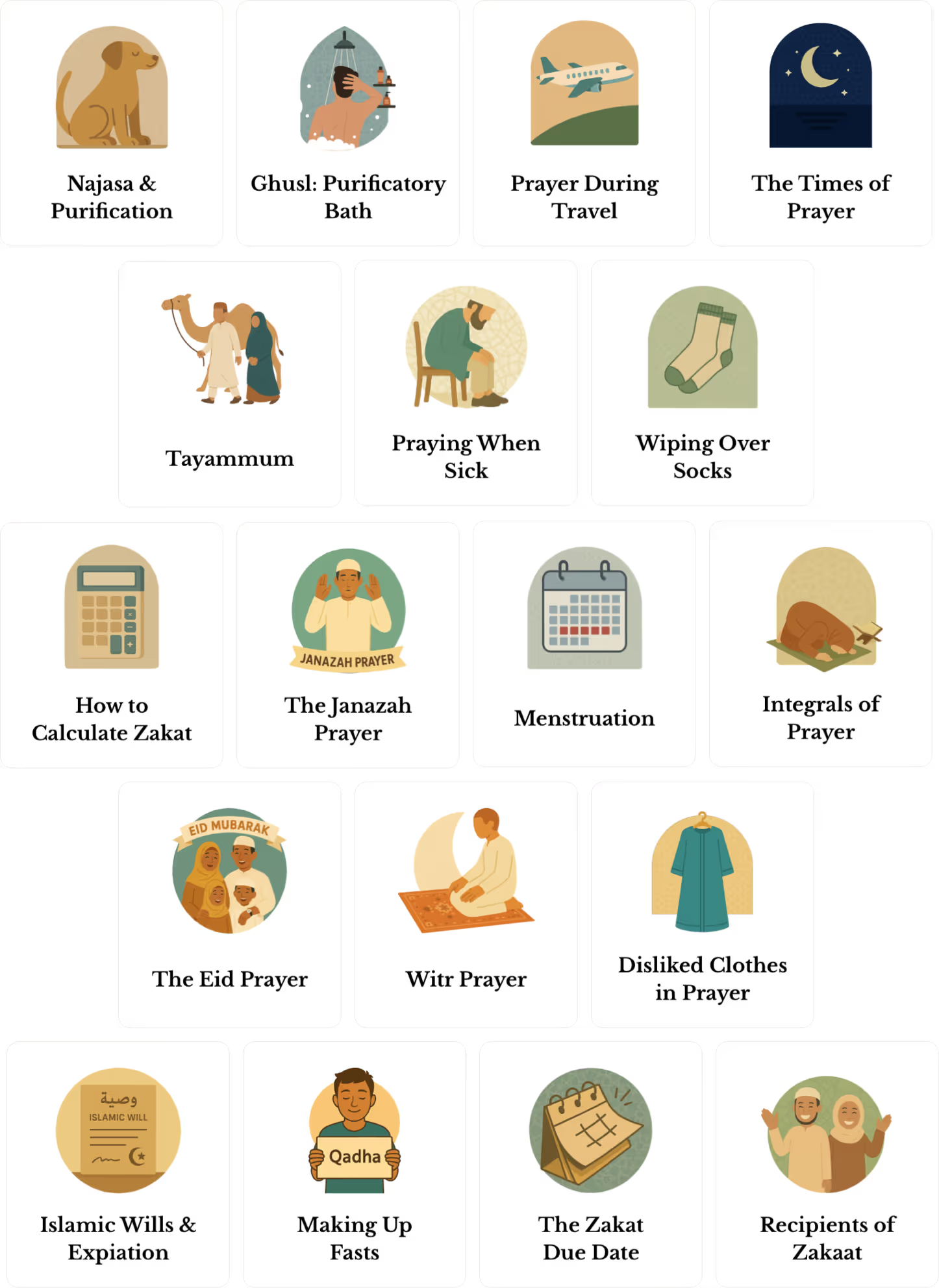How Many Rakats in Tahajjud Prayer (Hanafi)
Tahajjud is a voluntary prayer offered after Isha and before Fajr.
It holds great spiritual significance. The Prophet Muhammad (peace be upon him) described it as:
“the best prayer after the obligatory prayers”
Sunan an-Nasa'i 1614
This late-night prayer is a means to draw closer to Allah and was a regular practice of the Prophet (peace be upon him) and the early Muslims.
In the Hanafi school, there is a minimum and an optimal recommended number of rakaats, but no strict maximum limit - emphasis is placed on consistency and devotion.
Minimum and Recommended Rakaats for Tahajjud (Hanafi)
According to Hanafi scholars, the minimum number of rakaats for Tahajjud is two rakaʿats. This means even praying just two units of Tahajjud fulfills the basic definition of observing the night prayer.
On the other hand, the optimal or sunnah practice - based on the habit of Prophet Muhammad (peace be upon him) - is to pray eight rakaats for Tahajjud.
Notable works in Hanafi fiqh report the Prophet (peace be upon him) usually performed eight rakaats in his Tahajjud prayer. These eight rakaats are then typically followed by the Witr prayer (three rakaats) to conclude the night vigil, as was the Prophet’s (peace be upon him) practice.
In summary, Hanafi fiqh encourages a minimum of two rakaats and regards eight rakaats as the optimal sunnah for Tahajjud. The focus is not just on quantity but also on the quality of the prayer - maintaining concentration, humility, and unhurried recitation.
No Fixed Maximum: Quality Over Quantity in Tahajjud
One of the beauties of Tahajjud is that it has no strict maximum limit on the number of rakaats.
In the Hanafi view, a person may pray as many rakaats as they are able during the night, seeking Allah’s closeness.
Crucially, the emphasis is on quality over quantity. It is better to pray a moderate number of rakaats with deep focus and longer recitation than to pray a huge number of quick, short rakaats.
Hanafi scholars stated lengthier recitation is superior to a larger number of rakats prayed. In other words, one should aim for khushu (devotion) - reciting slowly, reflecting on the Quran - even if that means performing fewer rakaats.
Additional Hanafi Considerations for Tahajjud
The Hanafi madhab classifies Tahajjud as a highly encouraged nafl (supererogatory) prayer.
Hanafis also consider the Witr prayer to be wajib (obligatory), and it is performed after Tahajjud if one is planning to wake up for the night prayer.
Thus, a common Hanafi practice is to delay Witr until after completing Tahajjud in the latter part of the night. For instance, if you plan to pray eight rakaats of Tahajjud, you would then pray the three rakaats of Witr afterward to conclude your nightly worship
Consistency: One should try to pray Tahajjud consistently, even if just two rakaats, rather than occasionally doing many.
The Prophet (peace be upon him) advised us to take on spiritual deeds we can maintain, saying:
"Do good deeds properly, sincerely and moderately and know that your deeds will not make you enter Paradise, and that the most beloved deed to Allah is the most regular and constant even if it were little."
Sahih Bukhari
So, it’s better in Hanafi guidance to do a manageable amount nightly than to do a large number one night and nothing on other nights.
FAQs
How to pray Tahajjud according to Hanafi?
In the Hanafi school, Tahajjud is prayed between Isha and before Fajr (there are differences on whether it is after Middle of the Night or Last Third of the Night), starting with a minimum of 2 rakats. It is recommended to pray in sets of two rakats, focusing on devotion and slow recitation, and then conclude with Witr prayer.
How many rakat Tahajjud Hanafi?
The minimum number of rakats for Tahajjud in the Hanafi school is 2, while the optimal (and sunnah practice of the Prophet PBUH) is 8 rakats. There is no fixed maximum limit.
How to pray Tahajjud?
Tahajjud is performed between the Middle of the Night / Last Third of the Night (there are differences of opinion) and before Fajr in sets of two rakats, with a minimum of 2 rakats. Focus on sincerity, reflection, and slow recitation, and it is recommended to follow with 3 rakats of Witr.
Is Tahajjud nafl Hanafi?
Yes, Tahajjud is considered a nafl (voluntary) prayer in the Hanafi school.
Is 8 rakat Tahajjud sunnah?
Yes, 8 rakats is the sunnah practice of the Prophet Muhammad (peace be upon him) for Tahajjud, and is considered optimal in the Hanafi school.
How many rakats do I pray in Tahajjud?
You can pray a minimum of 2 rakats for Tahajjud, but the recommended number is 8 rakats. There is no maximum limit, so you may pray as many as you are able.
How to perform Tahajjud prayer Hanafi?
Begin after Middle of the Night / Last Third of the Night (there are differences of opinion) and before Fajr by praying at least 2 rakats in sets of two, focusing on devotion and slow recitation. You should follow the prayer with 3 rakats of Witr.
Conclusion
In summary, the Hanafi perspective on Tahajjud can be outlined as follows:
- Minimum rakaats: 2 (two) rakaats - even this simple offering fulfills Tahajjud.
- Optimal rakaats: 8 rakaats - following the Prophetic sunnah for night prayer.
- Witr: 3 rakaats Witr to be prayed after Tahajjud (before Fajr) to complete the night’s worship.
- Maximum rakaats: Unlimited - there is no fixed upper limit to Tahajjud in total. You may pray as many rakaats as you wish until the approach of Fajr.
- Quality focus: It’s better to have fewer rakaats with sincere, unrushed recitation than many rakaats performed hastily. Engage in Tahajjud with a mindful heart - reciting Qur’an, making dua in sujood, and feeling the tranquility of the night.
By adhering to these guidelines, one can reap the full spiritual benefits of Tahajjud. The Hanafi madhab’s teachings encourage Muslims to establish this night prayer according to their capacity.
Even if it’s just two rakaats nightly, Tahajjud carries immense reward and brings one into the company of those beloved servants who "forsake their beds to pray to their Lord in fear and hope" (Qur’an 32:16).
May Allah Ta’ala grant us the ability to perform Tahajjud regularly and with sincerity. Indeed, the night prayer is a key to His mercy and an elevation in rank for the believer.

















.avif)

Lorem ipsum dolor sit amet, consectetur adipiscing elit. Suspendisse varius enim in eros elementum tristique. Duis cursus, mi quis viverra ornare, eros dolor interdum nulla, ut commodo diam libero vitae erat. Aenean faucibus nibh et justo cursus id rutrum lorem imperdiet. Nunc ut sem vitae risus tristique posuere.
Lorem ipsum dolor sit amet, consectetur adipiscing elit. Suspendisse varius enim in eros elementum tristique. Duis cursus, mi quis viverra ornare, eros dolor interdum nulla, ut commodo diam libero vitae erat. Aenean faucibus nibh et justo cursus id rutrum lorem imperdiet. Nunc ut sem vitae risus tristique posuere.